If you happen to be celebrating Easter in Calabria and you arrive a little early, you may just come across what looks like a ragdoll hanging from a balcony or the side of a house. Not to panic, this is not some form of malocchio or evil eye, but Corajisima, a traditional practice during Lent in Italy, specifically, Calabria and other areas of the south.
WHAT IS CORAJISIMA?
Corajisima is more a who than a what. She is the wife or perhaps more accurately said, the widow, of Carnevale. She can also be called the sorella or sister of Carnevale. After the great feast of Martedì Grasso or Fat Tuesday, Carnevale, the embodiment of the revelries, dies. Poor Corajisima remains alone. Usually depicted as an ugly, skinny old woman with a decidedly unsettling appearance, she represents abstinence in the Lenten period.
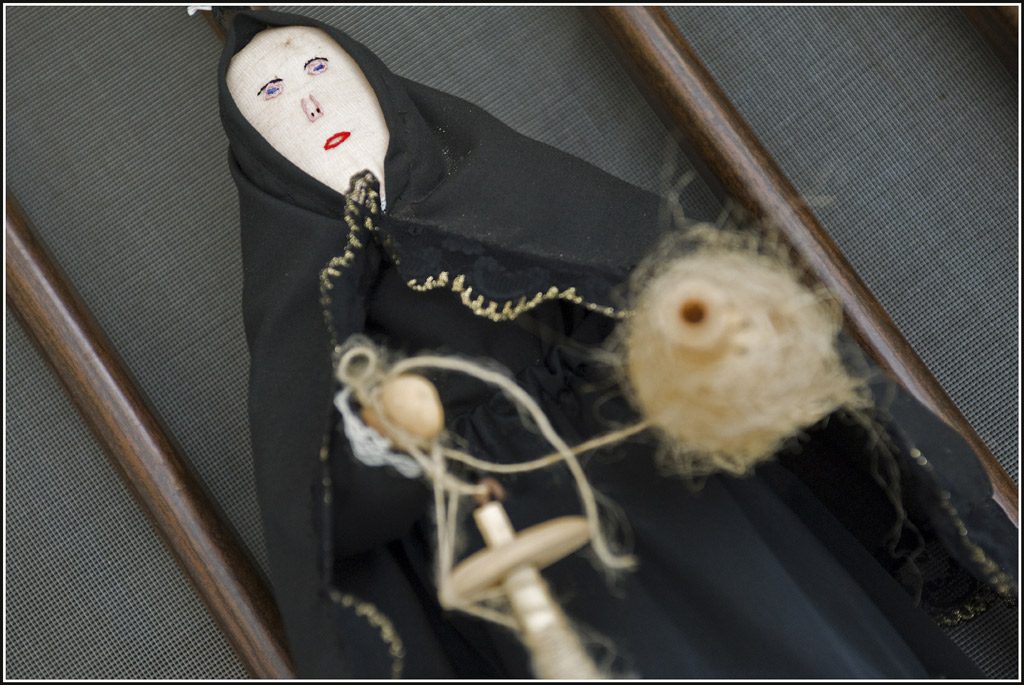
Corajisima, photo by Nerofumo
In some towns Corajisima starts out immediately after midnight of Martedì Grasso, roaming the streets and setting out pots full of boiling water to burn the throats of whoever dares to eat meat during Lent. Just the mere thought of such a horror has been known to scare children away from sweets for a good long time.
In the town of Palmi, for example, the children chant these verses:
Coraisima cu’ lu fusu
Quandu cadi si rumpi lu nasu
Si lu menti ‘nta pertusu
Coraisima cu’ lu fusu.
Italian
Quaresima col fuso
Quando cade si rompe il naso
lo nasconde in un buco
Quaresima col fuso.
English
Corajisima with the spindle
When she falls she breaks her nose
She hides it in a hole
Corajisima with the spindle.
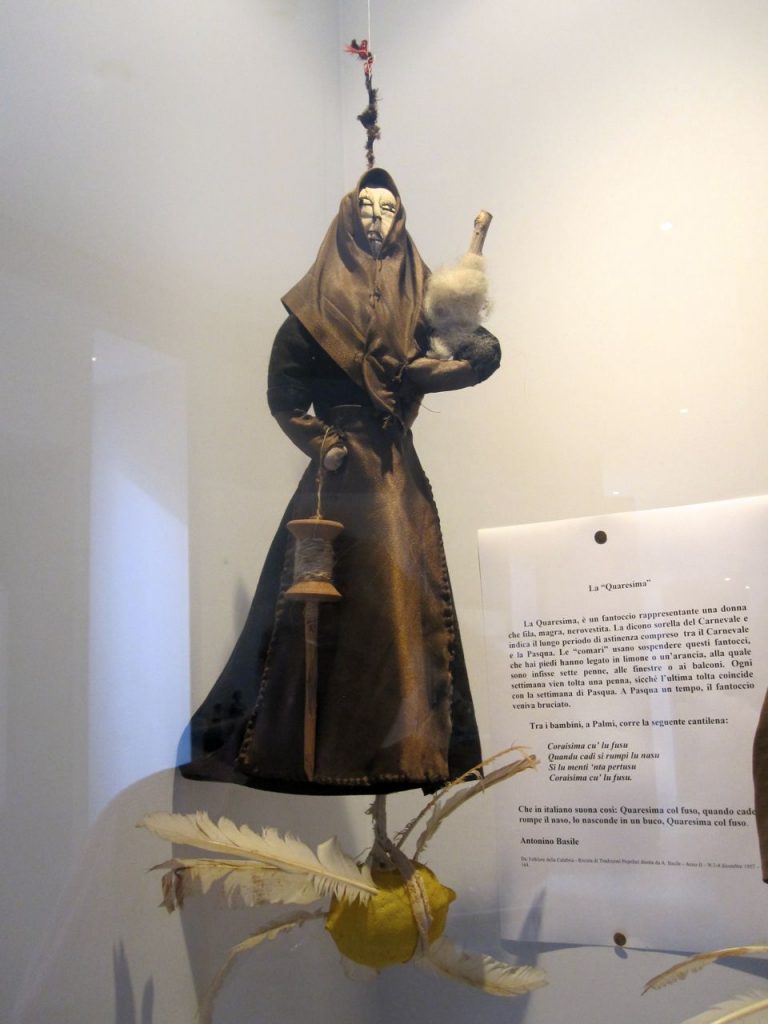
Coraisima at the Casa della Cultura in Palmi, Calabria
WHAT IS QUARESIMA?
Quaresima is the word used for Lent in Italy, or the forty days between Carnevale or Mardi Gras and Easter. It’s the period of abstinence that seems to never end, judging by the Italian expression, “essere lungo come la quaresima” (literally, to be long like Lent).
Quaresima comes from the Latin quadragesima and in addition to Corajisima has also been transformed to Curemme, Quarjisime, Quarajìsima or Quaremme in various Calabrian dialects. Needless to say, it isn’t a compliment when the word pops up in the description of someone, such as in these proverbi calabresi (Calabrian proverbs) in calabrese (Calabrian), italiano (Italian) and English:
Si chiù longu de corajisima.
Sei estremamente lento nel fare le cose.
You do things very, very slowly.
Pari na corajisima.
Sembri una Corajisima.
You look like a Corajisima.
(In other words, old and wizened…)
LENT IN ITALY – STILE CALABRESE (Calabrian Style)
Figures of Corajisima, a woman who’s clearly seen better days, appear on Ash Wednesday. They dangle from windows, balconies, doorways, chimneys, laundry lines, or anywhere else they’ll hang. Usually clothed in long black dresses with white faces whose eyes, nose and mouth are embroidered in black thread, the Corajisima holds a spindle and distaff in her hands, the thread between them representing the forty days of penitence, such as doing without meat and avoidance of culinary excesses, sober conduct and even conjugal abstinence.

Making Corajisima by Nerofumo

Corajisima Craftsman by Nerofumo
Corajisima usually stands on an orange, lemon or potato with seven feathers attached. One feather is removed each week after Sunday mass, with the last being taken away on Easter morning. The joyful ringing of church bells on Pasqua (Easter) signals the end of repentance and the return to good living as in this Calabrian proverb:
Gloria sonandu campanara mangiandu.
Gloria suonando, dolci mangiando.
Glory ringing, sweets are eaten.
NATURE AND TRADITION
Lent in Italy and many of its accompanying rituals connect historically with ancient pagan observances. In tune with the rhythm of nature, Corajisima is tied to the cycle of the seasons, as in the reawakening of the earth for the arrival of spring. For instance, in the mythology of Greater Greece that flourished throughout Southern Italy, the end of winter coincided with the goddess Persephone coming out from the underworld as the personification of vegetation. The Romans called her Proserpina. This precarious time anticipating the rebirth of the natural and spiritual worlds has found its expression in a simple, handmade doll with fruit, feathers and spinning tools attached, all full of symbolism and a way to persevere until the arrival of spring and the resurrection.
These sad, scary ragdolls aren’t as easy to spot as they once were. The tradition has all but died out in many towns and villages, but in the past few years, there has been a resurgence of the custom. And of course there are always variations, such as the use of an onion or a caciocavallo (a semi-hard cheese resembling a sack on a string) in which to stick the chicken feathers, or perhaps with a modern doll or even without.
But as delightful a tradition as it is, the coming of spring and Easter will always be a relief, as in this old saying that expresses the less-than-ideal situation when in the presence of Corajisima.
‘U ventu ‘no volava, ‘u mari ‘no vagava, Corajisima aspettava.
Il vento non volava, il mare non bagnava, mentre Corajisima aspettava.
The wind wasn’t blowing, the sea wasn’t lapping while Corajisima was hanging around.
Thus, Buona Pasqua (Happy Easter) and Bentornata Primavera (Welcome Back, Spring)!

photo by Nerofumo
Photos are courtesy of Nerofumo.
Can’t make it for Lent in Italy this year? To be sure to get a glimpse of Corajisima at any time of the year, visit the Casa di Cultura in Palmi. I wrote a blog post about the museum: Palmi, Calabria: The House of Culture and you can visit it on one of my CALABRIA TOURS.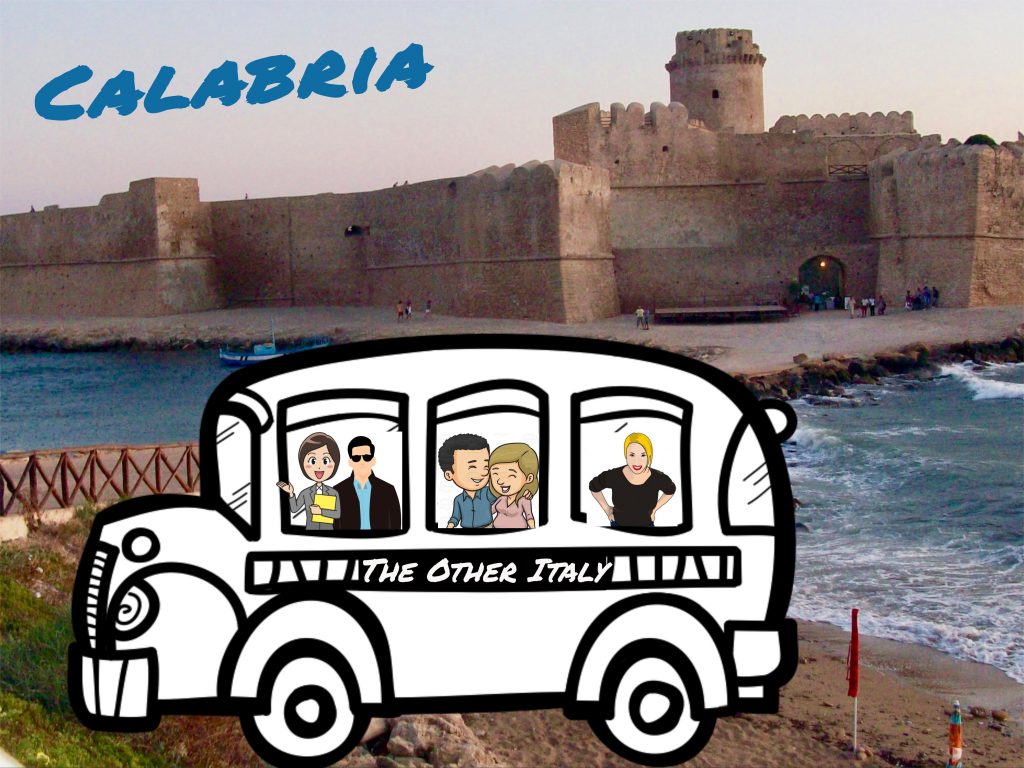
When is Easter this year? A 16th-century Calabrian already had it figured out a long, long time ago. Check out my blog post about his ingenious Easter Hand. Also on this blog, read about a traditional experience during Easter week in Easter in Calabria, The Processions of Badolato.
 Interested in Italian traditions and lifestyle? Read more about this fascinating southern region in Calabria: The Other Italy, a nonfiction, award-winning book that explores daily life, culture, history, the arts, food, society and tourism of Calabria, Italy. Available in paperback and e-book versions. Or come with me and see for yourself on a Calabria Tour!
Interested in Italian traditions and lifestyle? Read more about this fascinating southern region in Calabria: The Other Italy, a nonfiction, award-winning book that explores daily life, culture, history, the arts, food, society and tourism of Calabria, Italy. Available in paperback and e-book versions. Or come with me and see for yourself on a Calabria Tour!
“Like” Calabria: The Other Italy’s Facebook page and follow me on Karen’s Instagram and Karen’s Twitter for more beautiful pictures and information.
Sign up below to receive the next blog post directly to your email.
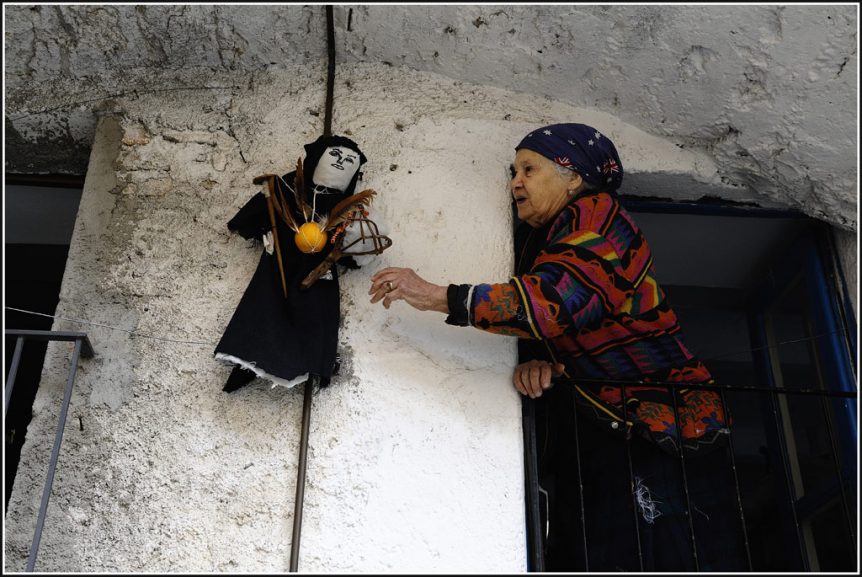


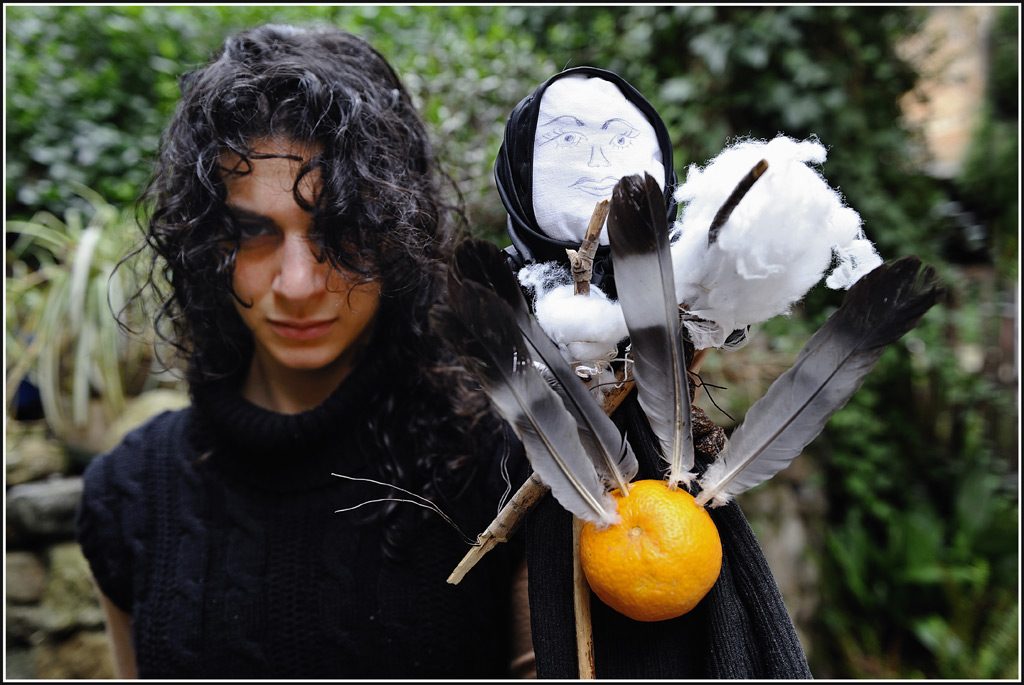
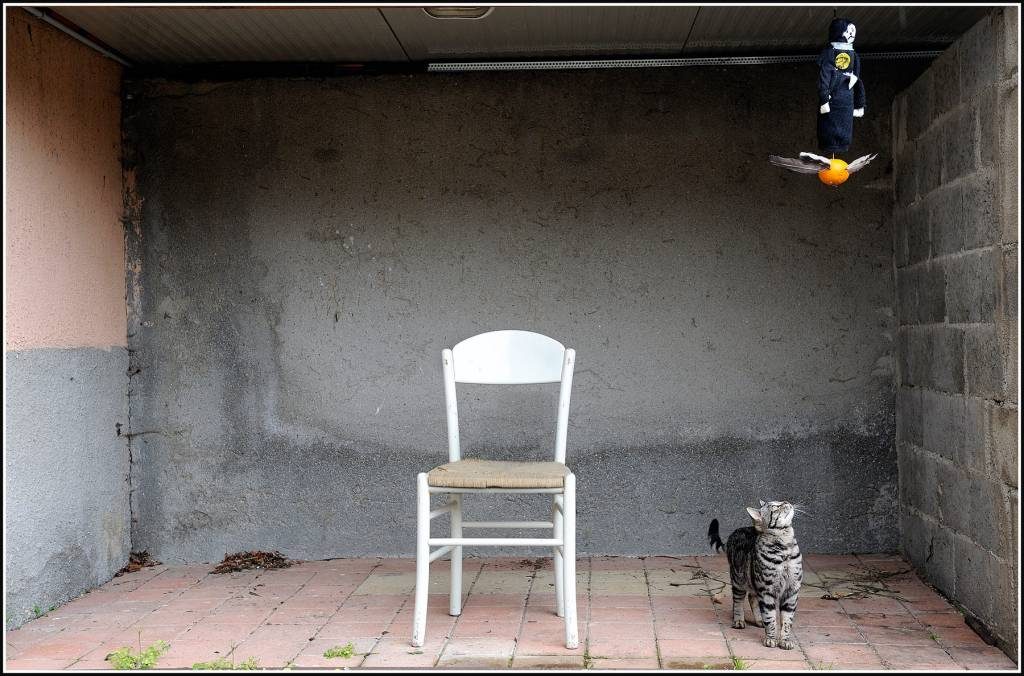
Comments 28
That is quite bizarre and interesting: )
Author
Many traditions come off a bit strange when looking in from the outside or seen for the first time, but we love coloring those hard-boiled chicken eggs!
Thanks for the lesson on one of the traditions in Calabria. My parents were born in Calabria , so I found this tale very interesting, and I must say I never heard it before. Thanks again. Frank Marchio
Author
Such traditions aren’t as common as they once were. I first came across the Corajisima at the Ethnographic Museum in Palmi (pictured above) and was immediately fascinated. Glad you enjoyed the post.
Very interesting post. Congratulations!!!!!
Author
Glad you enjoyed it – thanks for stopping by my blog.
Thank YOU for Sharing , AT THIS TIME OF MY LIFE I DON’T THINK I’LL MAKE IT TO ITALY EVEN THOUGH I’VE BEEN TRYING SINCE I FOUND OUT I WAS BORN THERE MANY MANY YEARS AGO BUT I HAVE TO TELL YOU THANK YOU FOR SHARING THIS IT’S ABOUT AS CLOSE AS I’LL EVER GET TO REGGIO, Di CALABRIA ITALY WHERE MY TWIN SISTER AND I WERE BORN WE ALWAYS PLANNED A TRIP THERE AND WE FINALLY WERE ABOUT TO MAKE IT AND SADLY I LOST MY IDENTICAL TWIN SISTER A few years ago.
Birth name : Nella Parlantini
Adopted Name: Marianne Napolitano
Married Name: Marianne Coombes
Divorced Name: Marianne Coombes
Born in : Reggio Di Calabria , ITALY
Excellent post, wonderful insight into Lent in the south, thank you.
Author
It’s a fascinating culture – thanks for your enthusiasm!
Thanks for reviewing the Calabrian tradition of Quaresima & Corajisima. It reminds me of the many interesting cultural things in your excellent book!
Author
Calabria is full of surprises!
Very interesting and rich article. Stimulating and well written.Thanks for making us part of this fascinating culture!
Author
There’s so much of interest in the culture and I’m very happy to share it. Thanks for your comment!
This was great I was in Calabria there’s so much history there you should do a book on the history of some of those old castles that I remember as a child and you thought they were just old broken down mess , but now I wish they could speak
Author
I wrote about the castles of Pizzo, Santa Severina, Corigliano Calabro, Le Castella and Vibo Valentia in my book, and on the blog I have posts about the castles of Roseto Capo Spulico, Sant’Aniceto, Amendolea, Pentedattilo, Reggio Calabria and Pizzo. But as you say, there’s so much history that every effort is just a scratch of the surface.
I’ve never heard of this tradition or the Corajisima, it’s interesting and a bit creepy! I’ll have to keep my eyes open for her here in Cosenza.
Author
Here’s a link to an article in Italian that names several different towns throughout the region in which you may be able to get a glimpse of them: http://www.profumidellacalabria.it/corajisima.html#.VtQDEFTndvs.facebook
Such an intriguing story behind the newer tradition of Christian Lent! Is the presence of the orange and/or lemon because those fruits are the ones in season at the time?
Author
Yes, the orange, in particular is a winter fruit, and it’s the one most used in this tradition. The lemon season is more varied throughout the year, depending on the variety.
How fascinating, Karen. I had heard about la Befana of course, but never about Corajisima!! A very interesting tradition and especially that now it’s gaining favor again. Thank you for this informative post!
Author
Aha, I hadn’t made any correlation between the two witches – interesting thought, Margie.
I recently spent 9 days in Roseto Valfortore, Puglia, Italy, which is about a 2 hour drive due east from Naples.
While there I purchase a hand made doll, for the town charity, that, as explained to me, is used for lent by attaching a potato under the dress and sticking 7 feathers, 6 white one black, to be pulled out every Sunday and the black one on Easter. The doll is very pretty, in traditional dress of the village, not at all ugly as the one described in Calabria.
I do not know what they call this doll in this village. Does anyone know?
I love the photo with the cat looking up, wishing that orange was cheese.
Author
Hmm… I didn’t know cats liked cheese. I imagined he wanted to play or bat the doll around a bit.
Nice to learn some of the traditions of my ancestors
Author
And I find this Lenten tradition particularly intriguing.
Is there any way to purchase one of these dolls?
Author
I haven’t ever seen them for sale commercially. However, as they are handmade, you could make one yourself or show photos to a craftsperson/seamstress, who could surely fashion a good representation of one.